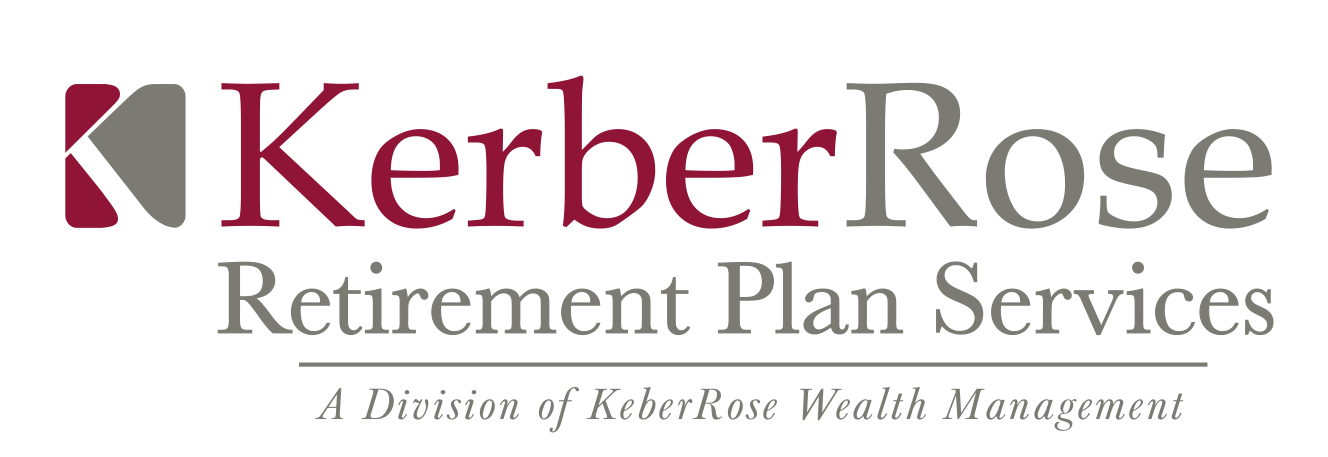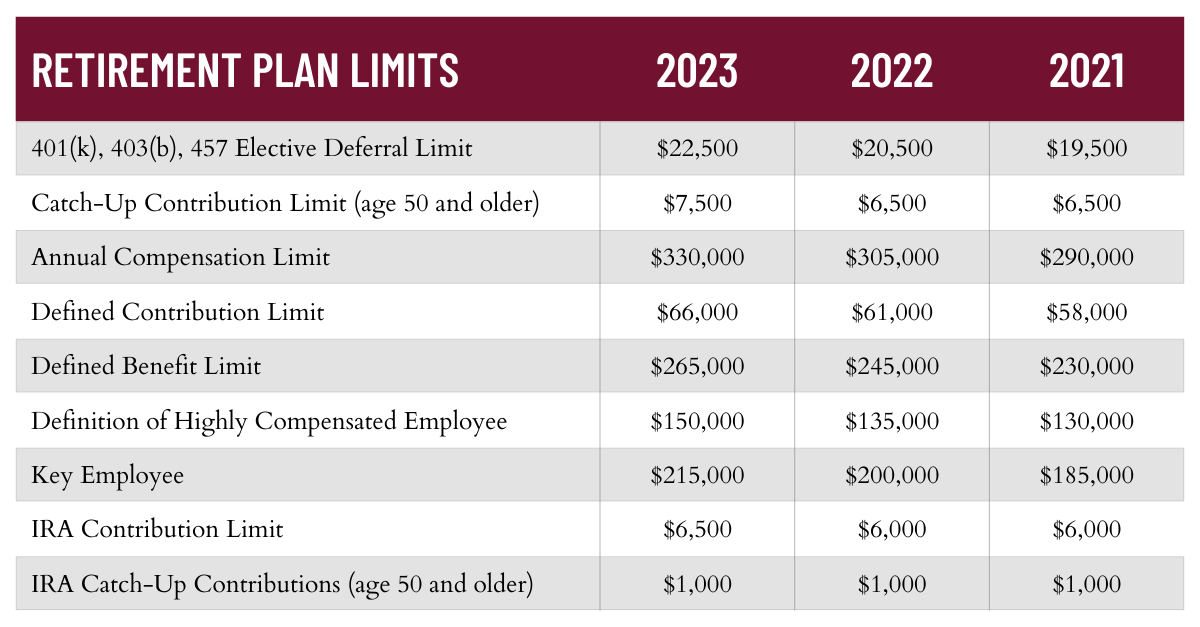2023 Retirement Plan Limits
The IRS has released 2023 inflation-adjusted limits on retirement benefits and compensation. The information below is from the IRS News Release IR-2022-188, published October, 21, 2022.
Highlights of Changes for 2023
The contribution limit for employees who participate in 401(k), 403(b), most 457 plans, and the federal government’s Thrift Savings Plan has increased to $22,500.
The catch-up contribution limit for employees aged 50 and over who participate in these plans increased to $7,500. The limitation regarding SIMPLE retirement accounts for 2023 has increased to $15,500.
The income ranges for determining eligibility to make deductible contributions to traditional Individual Retirement Arrangements (IRAs), to contribute to Roth IRAs and to claim the Saver’s Credit all increased for 2023.
Taxpayers can deduct contributions to a traditional IRA if they meet certain conditions. If during the year either the taxpayer or his or her spouse was covered by a retirement plan at work, the deduction may be reduced or phased out until it is eliminated, depending on filing status and income. (If neither the taxpayer nor his or her spouse is covered by a retirement plan at work, the phase-outs of the deduction do not apply.)
Here are the phase-out ranges for 2023:
For single taxpayers covered by a workplace retirement plan, the phase-out range is $73,000 to $83,000, up from $68,000 to $78,000.
For married couples filing jointly, where the spouse making the IRA contribution is covered by a workplace retirement plan, the phase-out range is $116,000 to $136,000, up from $109,000 to $129,000.
For an IRA contributor who is not covered by a workplace retirement plan and is married to someone who is covered, the deduction is phased out if the couple’s income is between $218,000 and $228,000, up from $204,000 and $214,000.
For a married individual filing a separate return who is covered by a workplace retirement plan, the phase-out range is not subject to an annual cost-of-living adjustment and remains $0 to $10,000.
The income phase-out range for taxpayers making contributions to a Roth IRA is $204,000 to $218,000 for singles and heads of household, up from $129,000 to $138,000. For married couples filing jointly, the income phase-out range is $218,000 to $228,000, up from $204,000 to $214,000. The phase-out range for a married individual filing a separate return who makes contributions to a Roth IRA is not subject to an annual cost-of-living adjustment and remains $0 to $10,000.
The income limit for the Saver’s Credit (also known as the Retirement Savings Contributions Credit) for low- and moderate-income workers is $73,000 or married couples filing jointly, up from $68,000; $54,750 for heads of household, up from $51,000; and $36,500 for singles and married individuals filing separately, up from $34,000.
Key limit increased
The limit on annual contributions to an IRA increased to $6,500. The additional catch-up contribution limit for individuals aged 50 and over is not subject to an annual cost-of-living adjustment and remains unchanged at $1,000.
Details on these and other retirement-related cost-of-living adjustments for 2023 are in Notice 2022-55 (PDF)¹, available on IRS.gov.
For more information about retirement plan limits, please contact Retirement Plan Services at (715) 524-6626 or email 401kservices@kerberrose.com.
¹ 2023 Limitations Adjusted as Provided in Section 415(d), etc.
RPAG is not in the business of providing legal advice with respect to ERISA or any other applicable law. The materials and information do not constitute, and should not be relied upon as, legal advice. The materials are general in nature and intended for informational purposes only.


